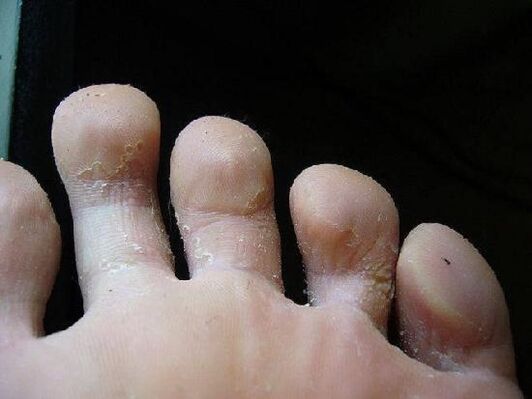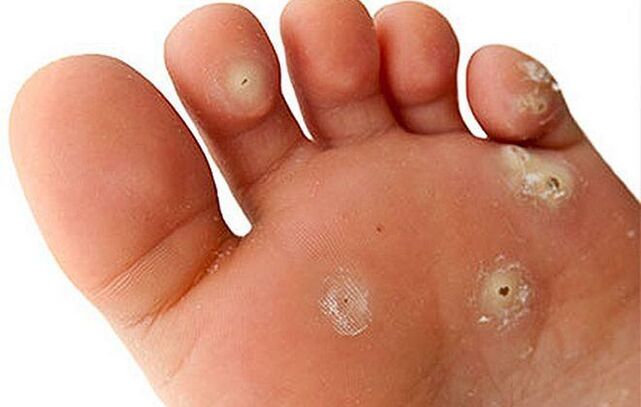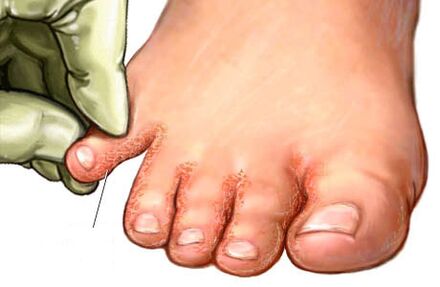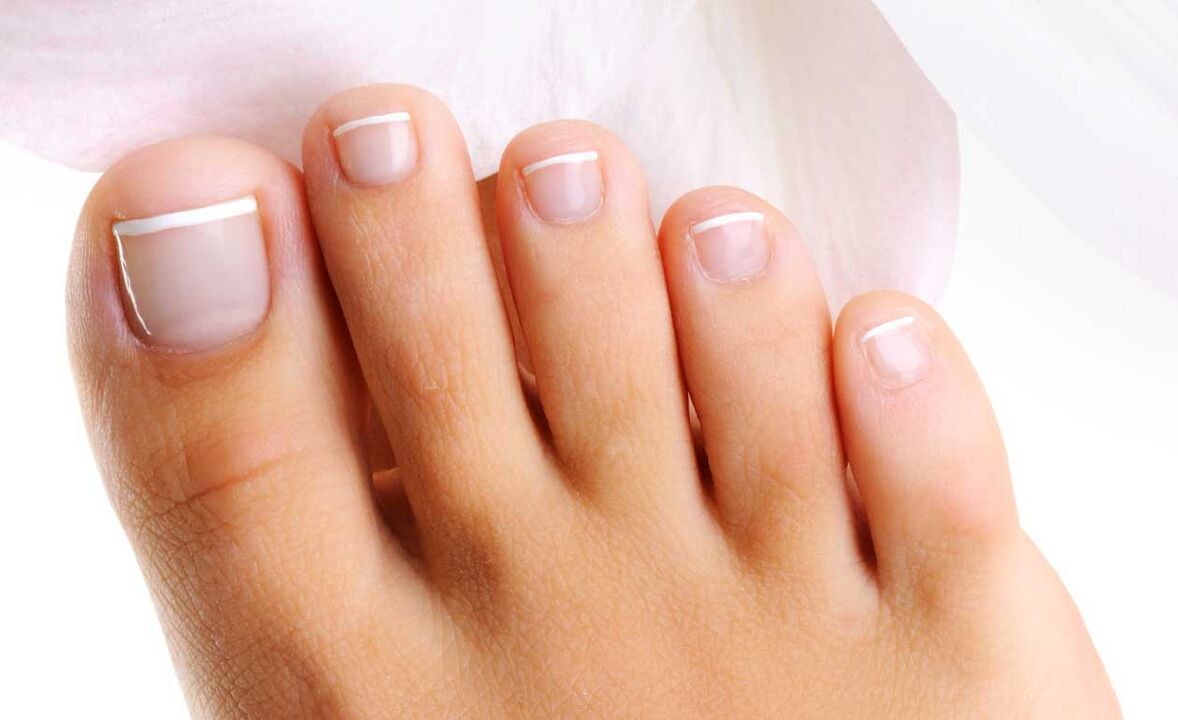Fungus on the feet is a seasonal disease and is most prevalent during the season of wearing closed shoes. Fungal infections of the feet do not attract as much attention as other types of fungi, such as toenail fungus. This is because the leg is not visible unless you are specifically observing it. And the first, not strong manifestations, are attributed to everyday causes.
The easiest way to test yourself for foot fungus is to pinch your shoes! Bad smell is a sign of a fungal infection. It is true that fungi themselves do not emit odors, but their residual products. . . Plus the remains of microorganisms that were placed in wounds caused by fungal disease. And mostly these are staphylococci. All taken together is what causes an unpleasant odor from shoes and feet.
The combination of skin on the affected skin causes the infection to spread!
When the feet are long in warm, closed shoes, they sweat profusely. A fungus that is not activated under normal conditions, after getting into the ideal environment for itself, actively begins to develop. Hence, the second name of this disease appeared - "athlete's foot". Fungal disease of the feet and is caused by several types of fungi. And since athletes spend most of their time in tight, closed shoes, they mostly suffer from this mycosis.
Athlete's foot is quite common. It is accompanied by a fungal infection of the ankle or the skin around the toes.
Such mycoses can be caused by the appearance of an infectious and highly contagious disease at the base of one of the species of the parasitic colony.
Fungal diseases that cause extensive skin lesions are provoked by a variety of fungi whose nature has been elucidated in the study of analyzes.

How a fungus manifests itself
Pathology on the skin of the feet manifests itself initially in small areas that are prone to peeling, then the spot spreads with uneven edges and the mycosis becomes more pronounced.
The activity of manifesting the symptoms of foot fungus can be both lightning and quite sluggish. Because it all depends on how strong the human immune system is and what type of microorganism brought about the disease.
The types of foot fungus are quite different and they are manifested in their own way, but if a person has any abnormal changes in the feet, then you should find out from the specialists what is the reason for this. Mycologists explain what a fungus is and teach you how to fight it.
What do foot fungus look like?
Foot fungus, for the most part, accompanies the "athlete's foot" - it looks like barely noticeable flaky skin. As the pathology spreads, the skin color becomes red and the changes become more noticeable. In addition, foot disease resembles large areas with large flakes of dry skin, sometimes with marks located on one side, sometimes on both sides of the foot. The localization of the foot fungus is usually located in the lower extremities and how the limb looks depends on the degree of development of the pathology.
Differences in species such as:
- A very dense layer at the base;
- Flakes begin to honey fingers;
- The skin is inflamed;
- Leg injuries also look like blisters.
The fungus formed on the feet looks quite expressive, so a person should notice specific manifestations and consult a doctor.

Causes of foot fungus
What to do if a fungus appears? To begin with, you need to find out the reasons for its appearance and think about where exactly the spores can be picked up and why the body did not respond properly.
On how the athlete's foot begins to form, the precursor to the development of pathogenic flora, mycologists say the following: Fungus on the foot can develop if a person uses the socks or shoes of an infected person and also does not wear slippers in places where crowds pass, particularly public places. In baths, saunas and swimming pools, because that is where the most favorable soil for the bacterial front is.
How to separate the fungus on the feet
With the development of mycoses, fungal disease is provoked at a fairly high rate, and such manifestations develop especially rapidly if there are concomitant chronic diseases. Diseases of the feet can be diagnosed independently, but in order not to confuse all the abrasions of the skin with fungal marks on the feet, you should carefully consider the condition of the cover, as well as how the skin looks under the toes.
Foot fungus is quite diverse in its symptoms, since the types of fungi on the feet are also not limited to just one, and each has its own characteristic manifestation.

What does a mushroom look like on the feet
And how the skin fungus may look on the feet will determine what its species is. So to speak, the mycelium will leave its "business card" upon arrival.
Sometimes people who have a history of such pathology do not even know about it, they just see a very dry coating on the feet, but they mean it should be so.
General symptoms usually look like this:
- Appearance of microcracks;
- Slight itching, especially between fingers;
- Acute peeling;
- Sometimes swelling and pain in areas where erosion occurs;
- Rarely, but bleeding occurs.
- Deep cracks may appear.
How to cure foot fungus
Treatment for fungus on the feet is a long process, but if the preparatory phase was carried out correctly, i. e. when diagnosing to find out which pathogen is parasitizing in the body, then therapy can be faster.
It is necessary to treat skin fungi comprehensively, using both internally obtained medications and external medical pharmacological means.
The athlete’s foot can be cured by carefully examining all the affected areas, this should be facilitated by the course of treatment.
You need to consult with mycologists about how to treat the fungus. They will be able to talk in detail about which drugs can deal with the disease.
Treatment of foot disease can be divided into several parts. An important task is to strengthen the most vulnerable areas and rehabilitate areas affected by the disease. It is important to know that the feet should always be dry and clean:
- And also shoes should be made from materials that breathe;
- Cotton replacement socks should become a good absorber that collects moisture;
- Once the feet have been in the shoes all day, they need to be thoroughly rinsed and lubricated with a special agent prescribed by a doctor.
It is also good to use special powders that prevent dry feet.
The next part of treatment involves the use of antifungal medications such as:
- Ointments of special composition;
- Cream with a lighter texture than ointment, which means a deeper angle of penetration inside;
- Aerosols with the smallest particles reaching the most difficult places to reach.
And although almost all pharmacological drugs for the removal of pathogens are sold in the retail pharmacy network without a special prescription, nevertheless, the advice of an experienced specialist will not only be superfluous, but, conversely, will contribute to the complex effects of this disease.
The most common reasons for which treatment does not work are, first of all, disruption of the treatment regimen and irregular use of funds.
There are also the following reasons:
- Many patients do not understand the severity of the disease and do not agree with the proposed treatment;
- About a third of patients do not go to specialists at all and from time to time they use self-employment, which, for obvious reasons, does not bring relief;
- Many patients do not believe that it is necessary to accurately diagnose the type of pathogen;
- Many, as soon as the first positive result is achieved, stop the treatment by itself.
How to treat foot fungus with folk remedies
You can also treat fungus on the feet with folk remedies at home.
There is one good tool you can do for yourself.
An ointment that destroys mycosis of the feet well:
- Vinegar essence - 110 grams;
- One raw egg;
- Butter - 200 grams (it is better to get a natural farmer).
Absorb from the kitchen shelf:
- Soda;
- Drunk coffee;
- Ground oats;
- Rice flour.
Such components, which are included in the stain, can be an excellent helper in sanding the skin of the feet. They are perfect for exfoliating skin particles and freeing areas that need to be treated from extra layers.
Compresses with anesthetic solution.
A gas compress is soaked in an anesthetic solution and strengthens the foot overnight. In the morning, the bandage is opened and the affected areas are treated with chamomile decor. Repeat for 7 days.
If you study the topic well, then foot disease can be cured by folk remedies, and skin fungus on the feet will pass without a trace, without the possibility of recurrence.

Consequences of advanced mycosis of the skin of the feet
Treatment of skin fungus on the feet should be comprehensive and timely, otherwise the following complications may occur:
- The parasitic elements themselves, as well as the products that remain after their vital activity, increase the risk of allergies in patients;
- The course of dermatitis can be complicated by cases of eczema and psoriasis;
- Once the skin is severely damaged, the infection penetrates smoothly into the lower layers of the epidermis and causes the onset of lymphostasis.
Athlete's foot, warts appear much more often and hyperkeratosis can occur.
Preventive measures
It is possible to prevent foot fungus, or rather its occurrence.
First, it is possible to use ointments and folk remedies as additional protection, and then to treat fungi, even if this happens, will be done according to a simplified scheme.
It is also necessary to perform the following steps:
- Eat a healthy lifestyle;
- Follow hygiene procedures;
- Strengthen the body's immune defenses;
- Use prophylactic measures.































